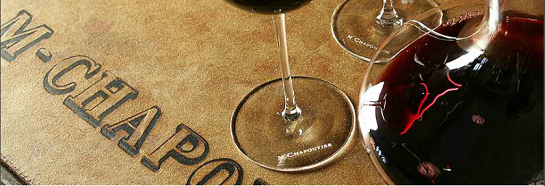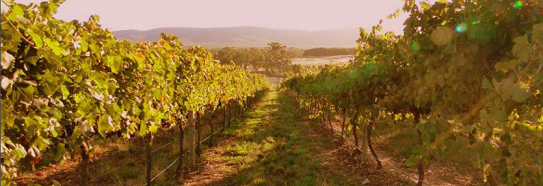
‘Soils have, quite often, more to tell than we can hear’
Michel Chapoutier (May 2013)
For more information on any of these wines or to express your interest contact josh@nickollsandperks.co.uk
At first glance, it might seem quite strange to some that Michel Chapoutier, the indefatigable champion of the Rhône Valley, its wines, soils, micro-climates and its heritage, has a growing portfolio of wines from other regions and other countries. Indeed when my love for Rhône wines and my conviction that they should be taken more seriously by collectors (particularly in 2012), collided with my slight trepidation as I faced 22 empty wineglasses at the portfolio tasting (13th May), I caught myself wondering the same thing.
However, having tasted the whole range of wines, it became clear to me that they form an integral part of the unifying Chapoutier philosophy of ‘letting the soil speak’ through the wines; that is to express terroir. His desire to express this in his top Rhône wines led directly to his expansion elsewhere, and therefore his various winemaking ventures cannot and should not be considered as distinct from each other. At the tasting Michel spoke of his almost limitless fascination for premium sites with exceptional soil characteristics, and as his top single vineyard expressions from Languedoc-Roussillon, Australia and Alsace are good examples of what can be achieved with such a sense of purpose.
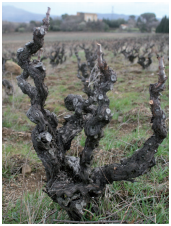
Before discussing these wines, a brief note on soil types: Chapoutier’s emphasis on terroir brings together two main ideas about the importance of soil types, which although recognised by most winemakers, is given greater significance by Michel. The first is that there are two types of soil, geological below the vines, and pedalogical, which is closer to the surface. He pointed out that only 10% of the vines reach the geological soil, hence the importance of old vines which have dug deeper. Related to this and perhaps more important for Chapoutier, is the concept of ‘vineyard soil’, that results from years of activity of micro-organisms around the roots of the vines:
‘my personal conviction is that the complexity in a wine comes from the level of microbiological activity around the vine roots’.
Therefore, as with his single vineyard Rhône wines, all of the below are the result of Chapoutier’s search for plots of old vines growing in exceptional soils. When combined with bio-dynamic methods, Chapoutier believes that the result is an ‘aromatic symphony’ which allows the wine to speak of its terroir and vintage. This is certainly the case with his good value Alsace Rieslings:
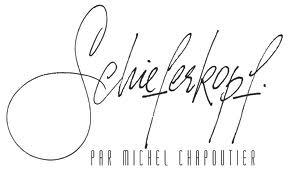
2012 Schieferkopf Par Michel Chapoutier Lieu-dit-Berg Riesling, Alsace
Cambrian soils (rare though in Heathcote too). Clay. Great race and depth with lime and masses of both fruit and minerals. Masses of extract on the palate distracts from the high acidity. Very long and rich yet it finishes dry. Very exciting. 18/20. Drink 2013-29. Jancis Robinson.
N & P notes: limestone-chemical aromas over lime on the nose. Lime and citrus zest on the palate. Minerality balances prominent acidity.
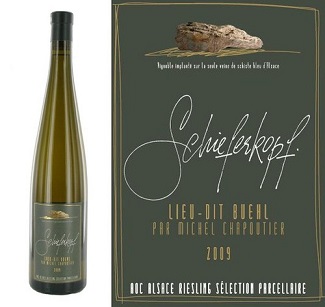
2012 Schieferkopf Par Michel Chapoutier Lieu-dit-Buehl Riesling, Alsace
Less aromatic than the Berg bottling – a bit fatter and softer. Some slight bitterness on the finish. Still quite chewy on the end. Very slightly dull on the end. More expensive than the other two bottlings because it is more difficult to work. 17/20. Drink 2015-25. Jancis Robinson.
N&P notes: sweeter nose with stone fruits, honeyed with development. Fuller palate. rhubarb astringency. Length and flinty minerality.

2012 Schieferkopf Par Michel Chapoutier Lieu-dit-Fels Riesling, Alsace
Lowest site so the topsoils are washed down. Big and bold with some sweetness in the background. Very concentrated. Some bitterness and impressive breadth. Muscular. 17.5/20. Drink 2016-30. Jancis Robinson.
N&P notes: a real creamy character to the nose of honeyed citrus. Forward and energetic palate of ripe stone fruits and ever so slightly bitter green apple skins.
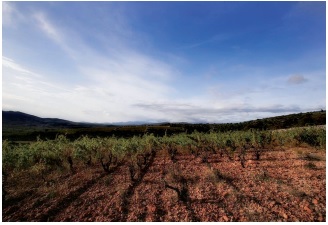
‘Wines with an incredible sap and a beautiful graphite expression of terroir’
It was Chapoutier’s 2012 wines from Rousillon, which will be released earlier than the Rhône wines, which represented the most complete wines on offer at the tasting.
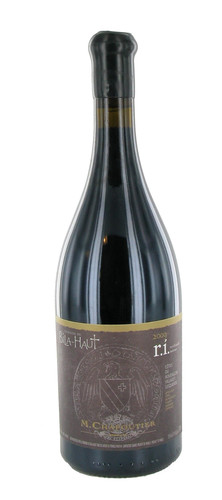 2012 Côtes du Rousillon Villages Lesquerde ‘R.I.’, Domaine de Bila-Haut
2012 Côtes du Rousillon Villages Lesquerde ‘R.I.’, Domaine de Bila-Haut
N&P notes: 2012 represents the smallest crop in the history of Lesquerde. The wine has a restrained & savoury, yet undeniably rich and deep nose with hints of slightly underripe raspberry, earthy spice and a vine stem dryness. The palate is smooth and full, with the granite expressing itself beautifully over inky bramble fruit. Tannins are obvious but are also silky, integrated and ripe. Simply stunning. 19/20.

2012 Côtes du Rousillon Villages Latour de France ‘V.I.T.’, Domaine de Bila-Haut
N&P notes: 65% Grenache, 35% Syrah. A more elevated and aromatic nose with blackcurrant and vanilla. Savoury, granite inspired inked character with time. Palate is smooth and quite savoury with red berries and darker fruit on the finish. Tannins a little astringent. 17/20.
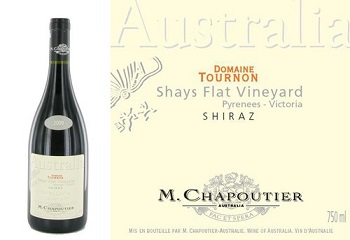
2012 Shays Flat Vineyard Pyrenees Shiraz, Domaine Tournon, Pyrenees, Australia
N&P notes: a very ripe nose full of bramble fruit and sweet spice such as cloves and vanilla. Quite jammy but balanced by a developing peppery note. The palate is weighty and cooling with inky blackcurrant and hints of black pepper. Some refreshing vegetal astringency on the finish, perhaps disguising the minerality somewhat however. 16/20.
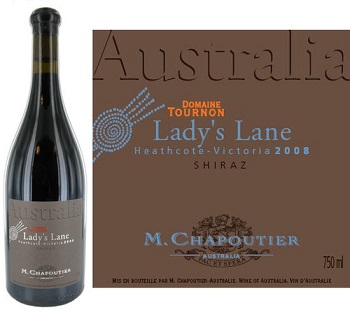
2012 Lady’s Lane Vineyard Heathcote Shiraz, Domaine Tournon, Heathcote, Australia
N&P notes: a more subtle and refined nose, lighter blackberry, some violet florals, pepper and a saline granite element. The palate is deep and cooling with blackberry, cloves and liquorice. Just as full bodied but the fruit seems fleshier and the wine more rounded. The finish is also more aromatic with subtle pepper on the tannins. 16.5/20
For more information on any of these wines or to express your interest contact josh@nickollsandperks.co.uk
Click the link below if you would like to view the full Chapoutier range we have available on our website. Other wines are available to reserve on request…

